I think good garden design is 50 percent planning and 50 percent luck. I know that may fly in the face of many in the garden design profession, but gardens change over time; they evolve and morph right alongside us. For me, that change is what makes the gardening experience deep and rich.
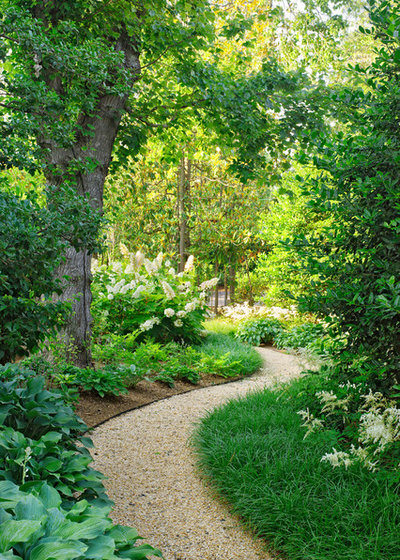
Katia Goffin Gardens
We can’t often predict how nature will play with our garden — what wildlife will visit or what storms may come — but we can design a space that allows us to let go and enjoy nature’s offerings.
Give the garden curves, bumps and bruises. Nature is curvy. Nature is bumpy. Nature is banged up. These are states of being we find beautiful in the world around us but don’t always find beautiful in ourselves or our private landscapes. Gardening by reflecting the larger world, I think, instills more personal confidence, forgiveness and happiness.
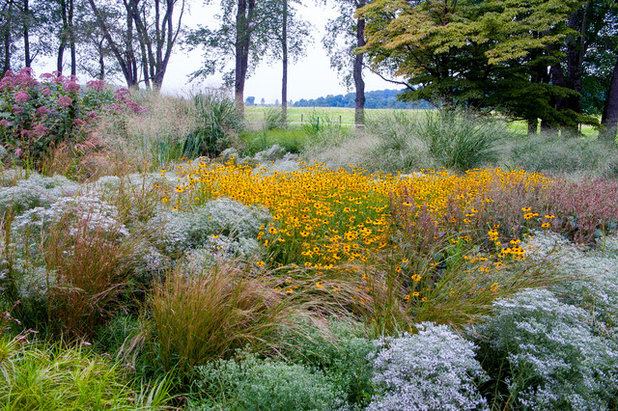
jonathan alderson landscape architects, inc.
You can start by eschewing the standard straight edges or planting in evenly spaced rows. If you have five little bluestem (
Schizachyrium scoparium) grasses, for example, plant two close together and the other three in a clump a few feet away, making sure they’re staggered. Repeat these clumps of the same plant in your garden so there’s an interrupted drift that echoes itself over and over, creating calm and reassurance while reflecting the wilder nature beyond the fence we find so enticing.
7 Ways to Use Drifts and Masses in Your Garden
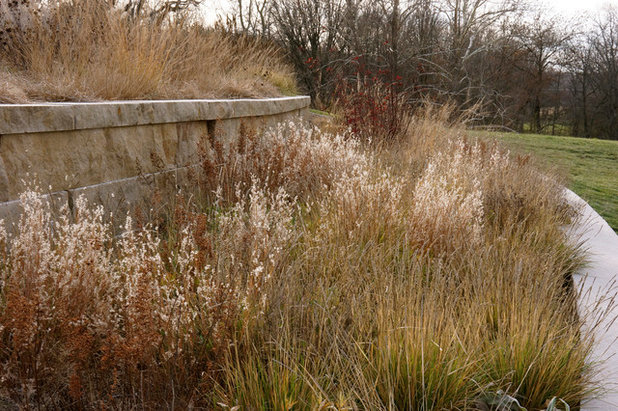
Adam Woodruff + Associates, Garden Artisans
Let plants bump out into paths and over edges. They should spread their arms as if experiencing freedom for the first time. Have a tree branch that’s fallen or split? Let it be if it’s not causing harm to you or the tree.
Celebrate the natural decay, sculptural art and surprise of the wild working in your landscape. Leave perennial stems and grasses up for winter. While it’s easy to see this detritus as a blight, a scab or dirty, it’s also possible to see this residue as the heart of the garden, the spirit of life lingering like a friendly ghost. Think of the absence of leaf and bloom as an opportunity to more deeply get to know the other side of your garden.
7 Reasons Not to ‘Clean Up’ Your Fall Garden
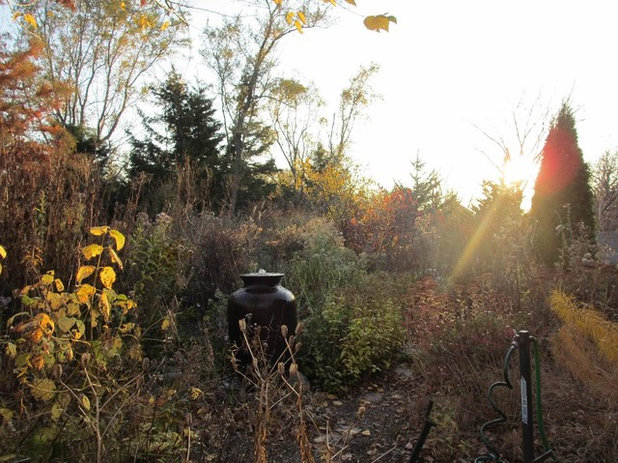
Benjamin Vogt / Monarch Gardens
Play with light. Notice where the sun is in your landscape at all times of the year — where it starts and where it ends up. If your garden gets open, low light during sunsets, plant grasses in such a way that they capture that light, absorb it and glow like ribbons of soft fire. Trees like willow or birch create undulating, dappled light at midday with their somewhat open canopy, inducing a swirling mirror ball effect on the ground below where sun and shade dance and flirt. Think of fall color too and how the autumn sunlight will reach into your space and create halos around blooming asters or illuminate the peach fuzz of seed heads.
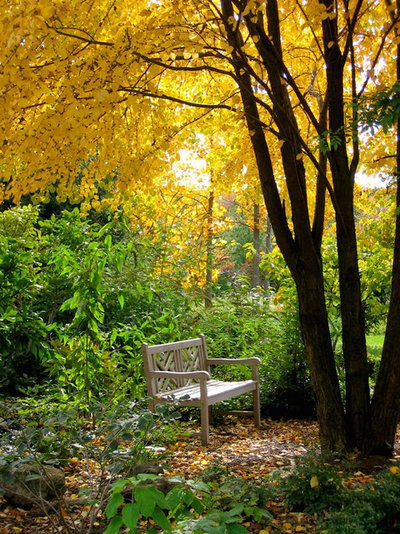
Enroot Landscape Planning and Design
Add benches and art. Not only are places to sit incredibly useful for pensive folks and tired feet, but they can also help bridge the human world and wilder nature. Most benches are fairly linear and geometric, while we tend to look at trees and flowers and grasses as free-formed and loose. An occasional juxtaposition of human and wilder nature creates a spark that signals entry into another world — sort of a channel that helps us understand ourselves as part of nature. How many times do we alight with joy when we see a mourning dove resting on a bench we used just moments before?
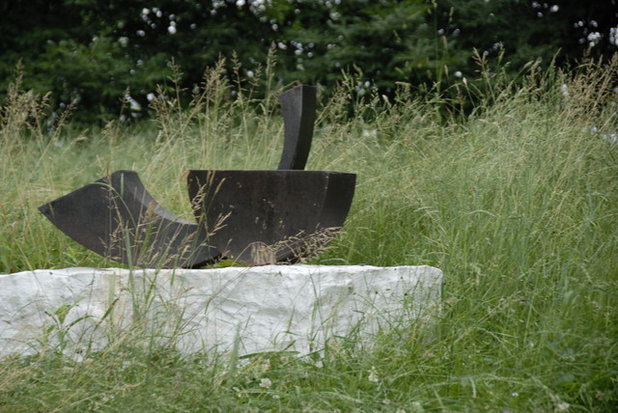
jonathan alderson landscape architects, inc.
Art is another way to bridge the human and nonhuman, certainly in some very powerful, deep and metaphorical ways. Personally, I’m a fan of abstract art and pieces that require some imagination to make sense of them — perhaps as a well-designed garden should. I also enjoy the curves, angles, colors and movement of abstract art that, to me, mimic trees, flowers, grasses and birds.
A kinetic sculpture can work too — something that moves with the wind and changes shape or perception moment by moment, just like the garden and, maybe, just like us.
What Sculpture Brings to the Garden
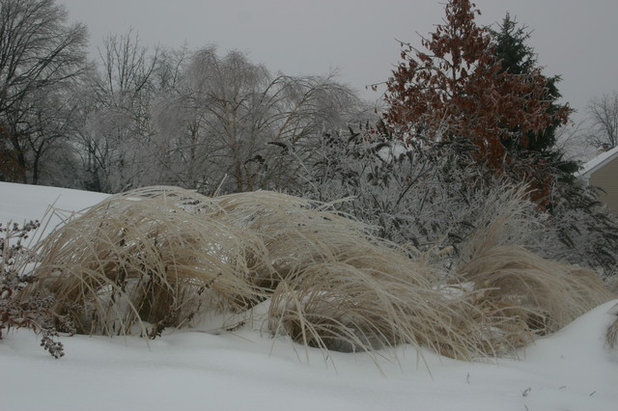
Donald Pell - Gardens
Design for winter. Perhaps nowhere else is the garden’s deepest being found than in the shadows, bones and decay of winter. Where there is silence there is the opportunity for reflection, healing and better understanding. That understanding comes from a sense of what is and isn’t working in the garden, from plants to hardscapes to the function the garden must serve for people, as well as from knowing that life is in actuality still fully present.
Countless bees, butterflies, beetles, moths and wasps are sleeping in carved-out stems, under leaf litter and in the soil. Snow graces woody stems and the tops of spent flowers while birds take shelter in grasses.
How to avoid throwing away your beneficial bees

Laara Copley-Smith Garden & Landscape Design
Find perfection in imperfection. Nature is not a garden, but it’s too easy to see nature as something imperfect. When we can take a step back and see a fallen tree as beautiful and purposeful or appreciate an assassin bug enjoying its moth dinner, we can see that the world doesn’t seem to need us in it, and we can start to become a more humble and rewarding part of it. A garden can teach us how to interact with life and guide us into deeper self-discovery if we design with purpose, then let that design evolve with the species that come to call it home.





